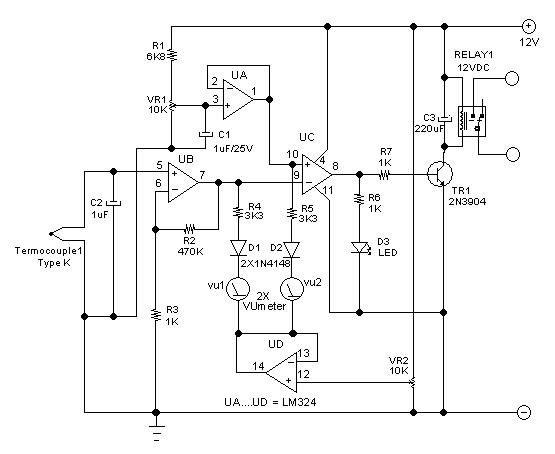
Introduction
Overview of Soldering Iron Temperature Controller
The soldering iron temperature controller circuit is a simple design using basic electronic components. It involves connecting a 2K resistor to the DIAC terminal and a 220 V power supply through a potentiometer for temperature control. This setup ensures precise temperature regulation during soldering tasks.
Importance of Using a Temperature Controller
Using a soldering iron temperature controller is crucial for electronic enthusiasts as it prevents the overheating of components, reducing the risk of damaging ICs or devices. The ability to adjust the temperature ensures accurate soldering and enhances the overall performance of the soldering process.

Basic Principles
Understanding Soldering Iron Temperature Control
The soldering iron temperature controller operates by utilizing a 2K resistor connected to a DIAC terminal and a 220 V power supply through a potentiometer. This configuration allows for precise temperature adjustment during soldering tasks, ensuring efficient heat regulation to prevent damage to components.
Factors Affecting Soldering Iron Temperature
Several factors influence soldering iron temperature, including the type of soldering iron used, the wattage of the iron, and the material being soldered. Additionally, the ambient temperature and airflow in the working environment can impact the temperature control of the soldering iron. It is essential to consider these factors to maintain optimal soldering conditions and ensure successful solder joints.

Components Required
List of Electronic Components for Temperature Controller
– Resistor: 2.2 k (1 piece)- Potentiometer: 100 K (1 piece)- Capacitor: 400V, 0.1uF (1 piece)- DB3 DIAC: 1 piece- BT136 TRIAC: 1 piece
Choosing the Right Components for the Circuit
When designing a soldering iron temperature controller circuit, selecting the correct components is crucial for optimal performance. The resistor, potentiometer, capacitor, DIAC, and TRIAC listed above are essential for regulating and controlling the temperature during soldering tasks. Proper selection of these components ensures efficient heat management and prevents damage to the soldering iron and components being worked on. By carefully choosing components that meet the circuit requirements, you can create a reliable temperature controller for precise soldering operations.

Circuit Design
Soldering Iron Temperature Controller Circuit Diagram
The soldering iron temperature controller circuit utilizes basic electronic components such as a 2.2k resistor, 100k potentiometer, 400V 0.1uF capacitor, DB3 DIAC, and BT136 TRIAC. The components work together to regulate the temperature of the soldering iron efficiently. By connecting one end of the 2K resistor to the DIAC terminal and the other end to a 220V power supply through a potentiometer, the temperature control mechanism is established.
Step-by-Step Guide to Building the Circuit
– Connect the 2.2k resistor to the DIAC terminal.- Link the other end of the resistor to a 220V power supply through a potentiometer.- Attach the remaining components as per the circuit diagram.- Ensure all connections are secure and follow safety protocols.- Test the soldering iron temperature controller for functionality and adjust as needed.

Working Mechanism
How Does the Soldering Iron Temperature Controller Work?
The soldering iron temperature controller operates by using components like a 2.2k resistor, 100k potentiometer, 400V 0.1uF capacitor, DB3 DIAC, and BT136 TRIAC. These components work together to regulate the temperature efficiently. The 2K resistor is connected to the DIAC terminal, linked to a 220V power supply through a potentiometer, establishing the temperature control mechanism.
Control Strategy and Temperature Stability
The control strategy involves connecting components as per the circuit diagram, ensuring secure connections and following safety protocols. Testing the functionality of the soldering iron temperature controller and adjusting it as needed helps maintain temperature stability and efficient soldering.